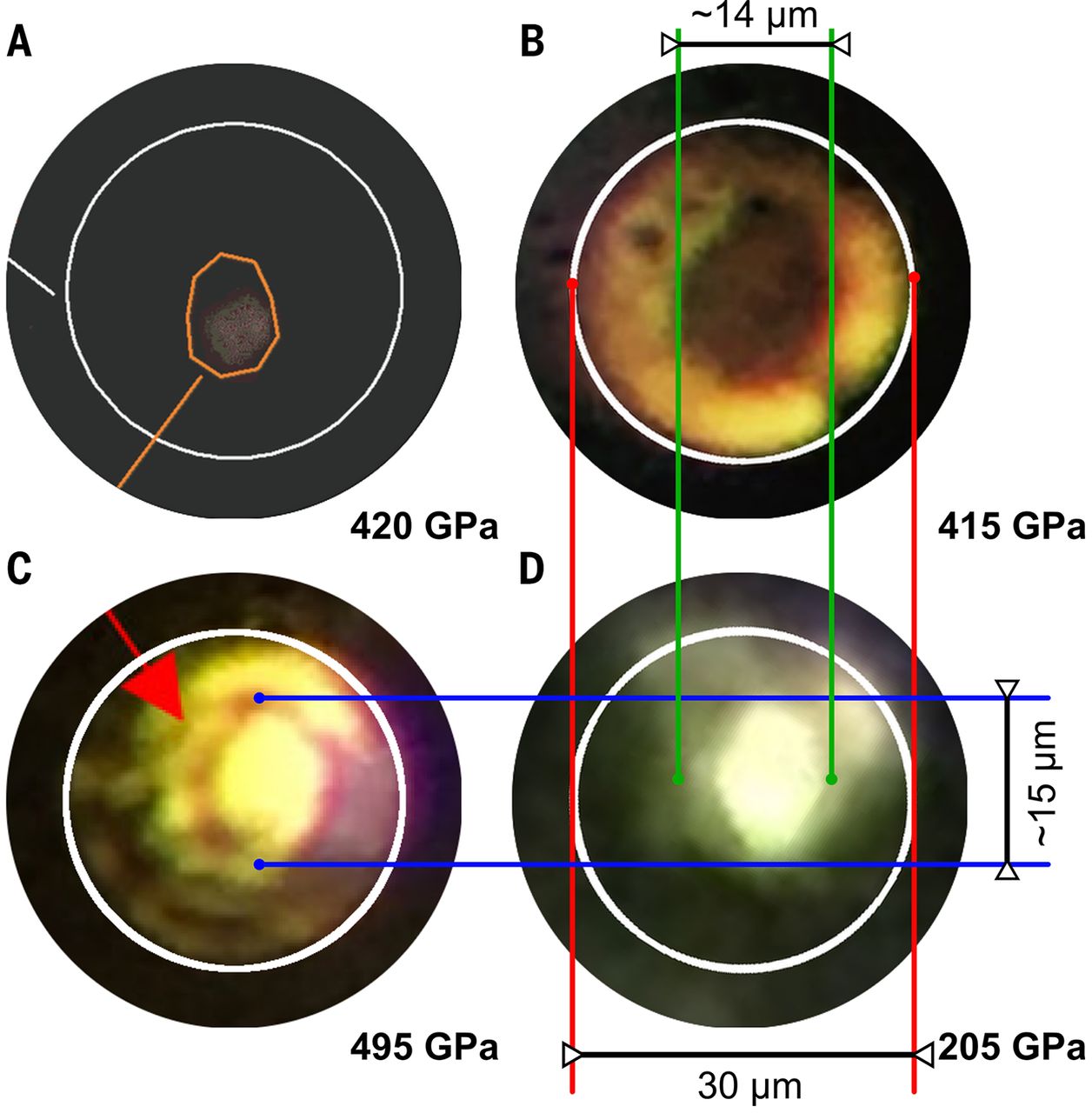
A recent work of Dias and Silvera from Harvard University reported on observation of metallic hydrogen in a diamond anvil cell at 495 GPa, in which they announced that they produced for the first time the "metal hydrogen" in a hydrostatic environment in the world.
Their work was published in Science in February 2017 and attracted a lot of attentions in the science community of condensed matter physics.
However, two groups led by professor Alexander Goncharov and Eugene Gregoryanz from the Institute of Solid State Physics(ISSP), Hefei Institutes of Physical Science, Chinese Academy of Sciences, argued in their two comments papers that the "metal hydrogen" results from the Harvard University are contradictory with the presented experimental description making their claims unsupported experimentally. The papers were published on Science.
"In the past 5 years we have conducted 30 experiments on hydrogen out of 120 the pressure exceeded 300 GPa and in only 5 runs the pressure exceeded 350 GPa. The extensive statistics show that the diamond culet sizes of 30 μm diameter they used can only reach maximum pressures of ~315±10 GPa with the probability of 20%.
In order to reach pressures to 495 GPa, the culet sizes less than 15 μm must be used. Moreover, it looks like that their sample was lost above 338 GPa and the ‘metallic hydrogen’ was actually the gasket", pointed out by Professor Eugene Gregoryanz, who just published one paper in Nature about the new phase V of hydrogen above 325 GPa last year.
Professor Alexandre Gontcharov, "A Thousand Talent Program" member in ISSP, who started conducting a synthesis of "fluid metallic hydrogen" with high-pressure high-temperature method two years ago, added that "There is no doubt that hydrogen metallizes at high pressures.
But this does not make all claims about reaching this state immediately valid. Scientific community would like to learn at what conditions hydrogen metallizes, what is the nature of the conducting state and its properties. But their presented data do not provide any reliable information on this."
Worse still, the pressure calibration, sample photos, IR absorption data and reflectivity from the "metal hydrogen" are all doubtful and not convincing.

Thephotos of hydrogen sample at various pressures. The transparent hydrogen samplebecame dark at 415 GPa and reflectivity at 495 GPa. (Image by JIANG Shuqing)

86-10-68597521 (day)
86-10-68597289 (night)

86-10-68511095 (day)
86-10-68512458 (night)

cas_en@cas.cn

52 Sanlihe Rd., Xicheng District,
Beijing, China (100864)

